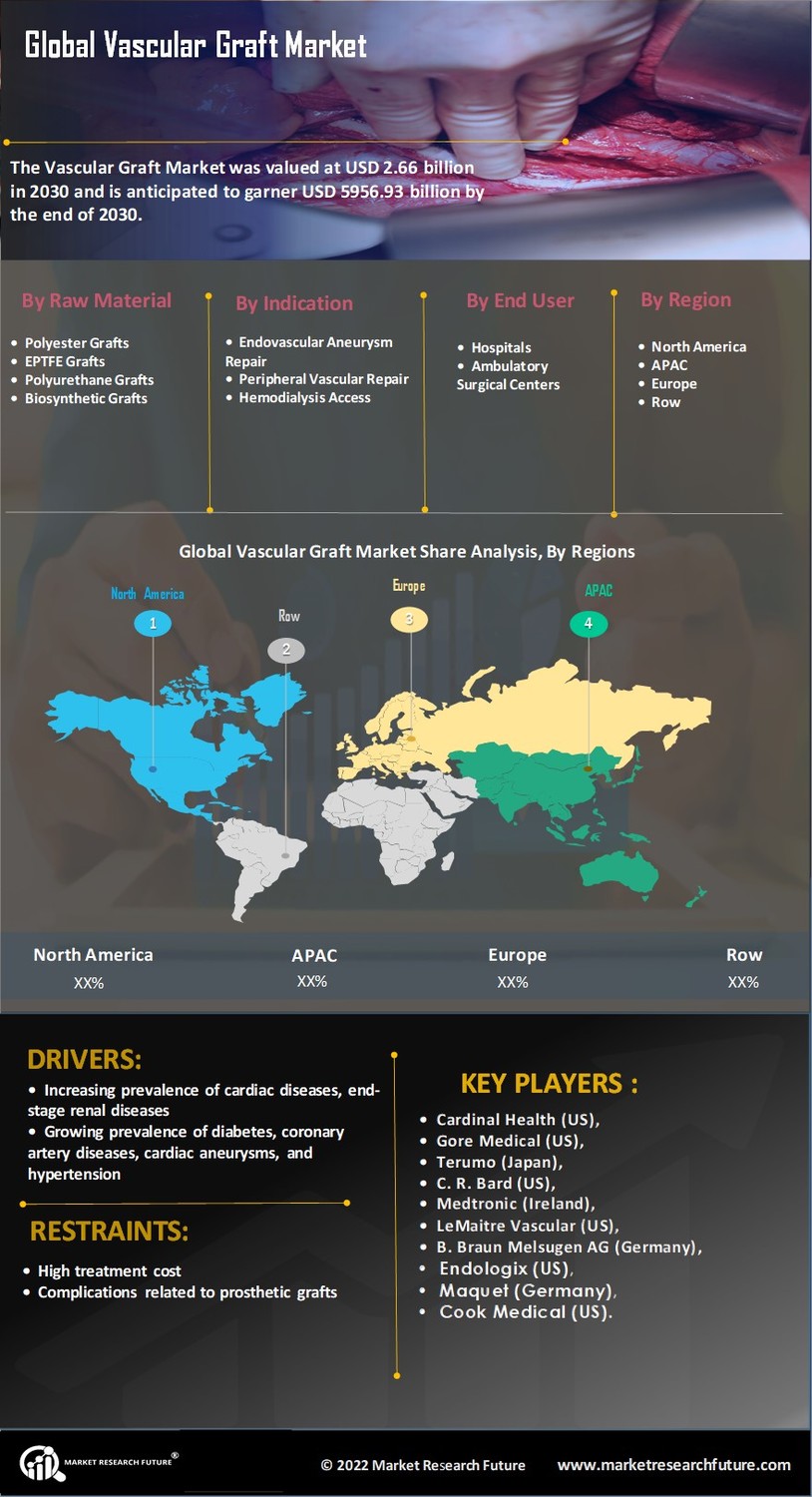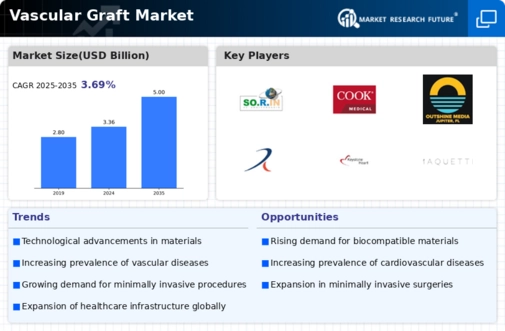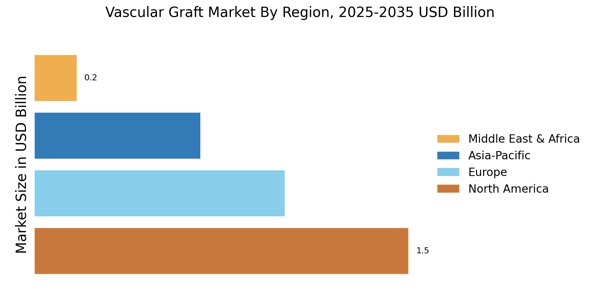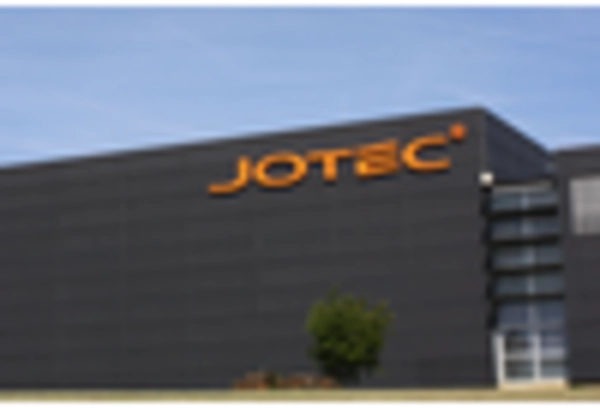Aging Population and Lifestyle Changes
The aging population, coupled with lifestyle changes such as increased obesity and sedentary behavior, is driving the demand for vascular grafts in the Vascular Graft Market. Older adults are more susceptible to vascular diseases, necessitating surgical interventions that often involve grafts. Furthermore, lifestyle factors contribute to the rising incidence of conditions like diabetes and hypertension, which are closely linked to vascular complications. As the demographic landscape shifts, healthcare systems are adapting to meet the growing needs of this population. This demographic trend is expected to sustain the demand for vascular grafts, indicating a positive outlook for the Vascular Graft Market in the coming years.
Increasing Prevalence of Vascular Diseases
The rising incidence of vascular diseases, such as peripheral artery disease and aortic aneurysms, is a primary driver of the Vascular Graft Market. As populations age, the prevalence of these conditions is expected to escalate, leading to a higher demand for vascular grafts. According to recent estimates, the number of patients requiring vascular interventions is projected to increase significantly, thereby expanding the market. This trend is further supported by advancements in diagnostic techniques, which enable earlier detection of vascular diseases. Consequently, healthcare providers are increasingly adopting vascular grafts as a standard treatment option, contributing to the growth of the Vascular Graft Market.
Technological Innovations in Graft Materials
Innovations in graft materials, including the development of bioengineered and synthetic grafts, are transforming the Vascular Graft Market. These advancements enhance the performance and longevity of grafts, reducing complications and improving patient outcomes. For instance, the introduction of materials that promote endothelialization has shown promise in minimizing graft failure rates. The market is witnessing a shift towards more sophisticated graft designs, which are tailored to meet the specific needs of patients. As a result, the demand for these advanced grafts is likely to increase, driving growth in the Vascular Graft Market. Furthermore, ongoing research and development efforts are expected to yield even more innovative solutions in the near future.
Government Initiatives and Funding for Vascular Health
Government initiatives aimed at improving vascular health are playing a crucial role in the Vascular Graft Market. Various health organizations are implementing programs to raise awareness about vascular diseases and promote early intervention. Increased funding for research and development in vascular health is also evident, leading to innovations in graft technology and treatment methodologies. These initiatives not only enhance patient access to necessary treatments but also stimulate market growth by encouraging the adoption of advanced vascular grafts. As governments continue to prioritize vascular health, the Vascular Graft Market is likely to benefit from increased investments and supportive policies.
Rising Demand for Minimally Invasive Surgical Techniques
The growing preference for minimally invasive surgical techniques is significantly influencing the Vascular Graft Market. Patients and healthcare providers alike are increasingly favoring procedures that offer reduced recovery times and lower complication rates. This trend is evident in the rising adoption of endovascular procedures, which utilize vascular grafts to treat various conditions. As a result, the market for vascular grafts is expanding, as these devices are integral to many minimally invasive interventions. Additionally, advancements in imaging technologies and surgical techniques are facilitating the growth of this segment, suggesting a robust future for the Vascular Graft Market as it aligns with evolving surgical practices.


















Leave a Comment